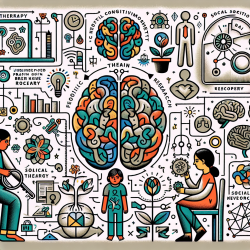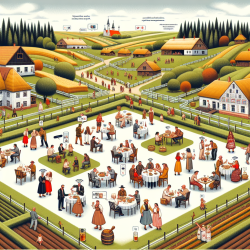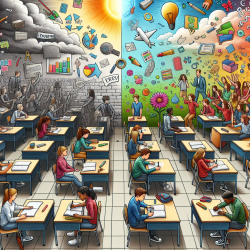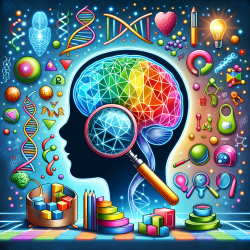Introduction
Recent research has shed light on the neural mechanisms underlying social exclusion in unaffected siblings of children with Autism Spectrum Disorders (ASD). The study, "Trait-level temporal lobe hypoactivation to social exclusion in unaffected siblings of children and adolescents with autism spectrum disorders," explores the brain responses of these siblings, offering insights into potential genetic predispositions shared with their affected siblings.
Key Findings
The study utilized functional magnetic resonance imaging (fMRI) to compare brain responses during social exclusion versus fair play. It found that unaffected siblings exhibited hypoactivation in the right anterior temporoparietal junction (aTPJ) extending into the posterior superior temporal sulcus (pSTS), similar to children with ASD. This suggests a shared genetic vulnerability, indicating that these siblings might have a trait-level abnormality in processing social exclusion.
Implications for Practitioners
For practitioners in speech-language pathology and related fields, these findings highlight the importance of considering genetic factors when assessing social communication difficulties. Understanding that unaffected siblings may share certain neural traits with their ASD siblings can inform therapeutic approaches. Here are some actionable steps practitioners can take:
- Early Screening: Consider screening siblings of children with ASD for social communication challenges, even if they do not exhibit overt symptoms.
- Family-Centered Approaches: Develop interventions that involve family members, acknowledging the shared genetic and environmental factors.
- Further Research: Encourage further research into the neural endophenotypes of ASD to refine therapeutic strategies and improve outcomes.
Encouraging Further Research
The study opens avenues for further research into the neural basis of social cognition in unaffected siblings. Practitioners and researchers are encouraged to explore how these findings can be integrated into practice and how they might influence the development of new interventions. Understanding the interplay between genetic predispositions and environmental factors can lead to more personalized and effective treatment plans.
Conclusion
The study's findings underscore the complexity of ASD and its broader familial impact. By recognizing the trait-level neural differences in unaffected siblings, practitioners can better support these individuals and their families. This research not only enhances our understanding of ASD but also highlights the need for a comprehensive approach to therapy that considers genetic and environmental influences.
To read the original research paper, please follow this link: Trait-level temporal lobe hypoactivation to social exclusion in unaffected siblings of children and adolescents with autism spectrum disorders.










